
Olkoth clearly wrote a few riffs and leads that could be effective on their own.
No CommentsTags: 2016, black 'n roll, Black Metal, counter-review, medieval metal, Olkoth, psychedelic, re-review, review, wanking

Olkoth clearly wrote a few riffs and leads that could be effective on their own.
No CommentsTags: 2016, black 'n roll, Black Metal, counter-review, medieval metal, Olkoth, psychedelic, re-review, review, wanking
Article by Lance Viggiano.
If it wasn’t already obvious from his PVC and faux cowboy touring get up borrowed from Nikki Sixx; David Vincent finally abandons any pretense of interest in metal music by trading his lace for the lasso.
18 CommentsTags: country, country music, country western, Covenant, Dave Vincent, david vincent, homosexuality, morbid angel, news, sell-out

Slayer are touring North America this fall with lesser eighties speed metal bands Death Angel and Anthrax. I’m still hoping for a SlayExodus tour where the same lineup plays 75% Slayer and 25% Exodux material. Slayer Fan Club members (Does anyone who doesn’t watch the WWF pay to join this?) may preorder tickets now; sales to the general public go on sale Friday.
4 CommentsKerry King: “It’s always super fun for us to tour with Anthrax. Frank is one of my best friends in the biz!! Put that together with Death Angel, and fans will probably see the best package this year. See you there!”
With more dates to be announced, here is the confirmed itinerary:
SEPTEMBER
9 Jacob’s Pavilion, Cleveland, OH
10 Freedom Hill Amphitheatre, Detroit, MI
12 Sound Academy, Toronto, ON
13 Metropolis, Montreal, QC
15 Stage AE, Pittsburgh, PA
17/18 Rock Allegiance, Chester, PA*
20 Egyptian Room, Indianapolis, IN
22 The Pageant, St. Louis, MO
27 Hard Rock Live, Orlando, FL
28 Fillmore, Miami, FL
30 Horseshoe Casino Tunica, Tunica, MSOCTOBER
3 Norva, Norfolk, VA
5 Tabernacle, Atlanta, GA
7 Gas Monkey Live, Dallas, TX
8 ACL at the Moody Theatre, Austin, TX
10 Fillmore, Denver, CO
11 The Complex, Salt Lake City, UT
13 The Wilma Theatre, Missoula, MT
17 ENMAX Center, Lethbridge, AB
19 South Okanagan Events Centre, Penticton, BC
20 Abbotsford Centre, Abbotsford, BC
23 Reno Events Center, Reno, NV
27 El Paso County Coliseum, El Paso, TX* Slayer, Anthrax and Death Angel are all on this bill.
Tags: anthrax, death angel, news, slayer, tour, tour dates, US tour

Dead Congregation have repressed their debut EP, Purifying Consecrated Ground, on frontman Anastasis Valtsanis’s own Martyrdoom Productions label in digipak CD format. The new fans the band picked up with their last album, Promulgation of the Fall, will finally have a chance to own a physical copy of the band’s most concise work.
7 CommentsTags: atmospheric metal, dead congregation, death metal, Martyrdoom Productions, news, Purifying Consecrated Ground, reissue
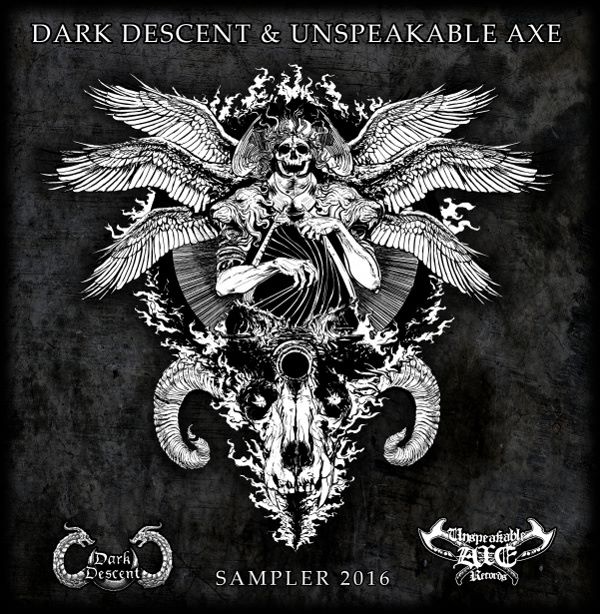
Dark Descent and Unspeakable Axe Records have released a new free sampler CD of their recent upcoming releases. It is freely available with a purchase from the Dark Descent online store and for free download on their Bandcamp page with four additional tracks that couldn’t fit on the CD.
6 CommentsThe new Dark Descent Records/Unspeakable Axe 2016 CD sampler is now available. This is a FREE sampler and available with purchase through our web store and at Unspeakable Axe. Included on the disc is 16 tracks (8 from each label) with premieres from Blood Incantation, Excommunion, Lantern and Ruinous. The sampler also includes an discount code good for our web stores. Get yours now before it’s too late!
Trenchrot – Hell Pilot’s Call
Blood Incantation – Chaoplasm
Ripper – Anthropophagic Life
Ghoulgotha – The Sulphur Age
Hemotoxin – Transparent Eyes
Sheidim – Without Reins
Nucleus – Cube
Excommunion – Nemesis
Mortal Scepter – Violent Revenge
Nox Formulae – Hidden Clan NXN
Scorched – Lust for Strangulation
Lantern – Cleansing of the Air
Manic Scum – Strapped to the Gurney
Ellorsith – Jerome I
Obscure Evil – Enchants of Bitterness
Ruinous – Dragmarks
Tags: Black Metal, dark descent, dark descent records, death metal, news, Speed Metal, Unspeakable Axe Records
Article by David Rosales.
We often use the term underground following the multiple discussions of underground extreme metal started on Death Metal Underground by Brett Stevens himself. Conceptualizing it here would be redundant and confusing. Instead, we might benefit more from brainstorming that allows for the reveling of authenticity that so characterizes underground music. What we are interested in here is not metal only, or metal as a whole, but rather metal as conducive to realization, breaking of false boundaries, destruction of a false mainstream, doing away with a useless society, and a contempt for a decadent civilization that through negation is blind to its own fatality.
The answer is not in this or that genre, in formal philosophy, or in the bare findings of the scientific establishment, but in their use in service of individual discernment. Music itself, if taken as more than mere sensual distraction, is the intuitive way leading to the shattering of illusions perceived through the senses, instigated by the mundane. This is not mere sophistry,; its most practical result is that in the abstract realizations thereof the mind is free to challenge what before appeared as commandments written in stone. Reality does not belong to anyone; truth is a quest.
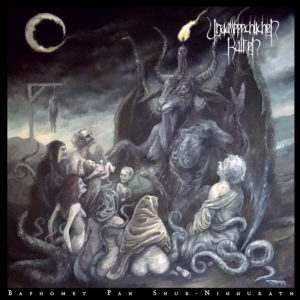
Unaussprechlichen Kulten – Baphomet Pan Shub-Niggurath (2014)
The tumultuous death metal of Unaussprechlichen Kulten captures the rawness of exploring black magic in darkness upon the listeners mind. What is significant about the interest of metal at large in what is hidden, what is occult, is not the morbidity alone, although that is the explanation that even luminaries may conjure and the only one that the rabble may consciously understand. The open door to asocial darkness, to inhumanity, to disintegration, is the contrast between ephemeral and the immanent. However, facing this burning darkness is also a voluntary act: it lies beyond good and evil, where the primal breath of the whole that puts our non-divinity into perspective. Here, the old school death metal expressions within free structures that never overextend and are perhaps inconclusive, nevertheless represent a perfect introduction to an energetic flow of destruction and consumption.

Sorcier des Glaces – Snowland MMXII (2012)
A well-deserved update of Snowland, Sorcier des Glaces’ Snowland MMXII shines with self-attenuated glow, hiding vibrant vitality. This is the course of nobility after or through darkness. Sorcier des Glaces takes us to the essence of black metal as post-nihilism. What some would confuse with empiricism or mere scepticism, but is in reality free transcendentalism following death, complete nihilistic destruction. The dark light emanating from image and action, from reality and unreality, the delight beyond sensuality in the universe as it is as perceived imperfectly as we see it in the thousand ways in which we tune in to it.

Isa – Отход на закате [Departure at Sunset] (2015)
Risking death by lynching, I’ll introduce this rather inconspicuous and only vaguely metal album as the culmination of this discussion. This lies more in the realm of ambient and is liable to be confused with post-rock when seen from a certain angle. Departure at Sunset captures the naturalist side of metal in a stronger way than do most these days. This is done in perhaps an extreme way that does not befit the always-hidden, the underground spirit of metal. That is, there might be too much sunshine in this for the traditional underground, so that it might seem counter-intuitive for some to see this as more authentically revealing than what sounds traditional. But the trademark old school sound has been hijacked for a long time now, it has been commercialized in what is almost a counter-spell to its original black conjuration. The truth seems to emerge, then, in the opposite, sunlit, ice-clear sounds of this ambient metal that transports us to Siberia as the antithesis to the modern world.
Tags: Baphomet Pan Shub-Niggurath, Black Metal, death metal, Departure at Sunset, Isa, Snowland MMXII, sorcier des glaces, unaussprechlichen kulten, underground death metal, underground metal, underground music, Отход на закате
Michael Denner and Hank Shermann (the dueling guitar virtuosos behind Mercyful Fate) have announced that the mixing and mastering is done on the upcoming album from their technical power/speed metal project, Denner / Shermann. Hopefully Masters of Evil (to be released by Metal Blade Records on June 24th ) is better than their previous EP but don’t get your hopes up. Check out the preview track below:
No CommentsTags: denner/shermann, Heavy Metal, mercyful fate, metal blade records, news, power metal, Speed Metal, technical, technical metal, wanking
Resistance fuels hatred and must be crushed beneath an iron fist.

The Oath – The Oath (2014)
“Whoa!” – Keanu Reeves. These women are actually fairly attractive! Usually metal girls are fat, under 5’4, and have saggy tits. Or they love Slipknot. I can see why Lee Dorian is dicking the hot one. This at least has riffs even if most of the songs wear out their welcome fairly quickly. There are Cathedral albums more boring than this but most of these songs feel like Motorhead if they smoked dope instead of cranked speed. Motorhead if Motorhead were boring and the songs went on two minutes too long and had random riff salad bridges. If these two would actually get naked on the cover like the real Coven and separated or refined their compositions, maybe this would be more listenable. Hold it is that riff from Bad Company? Who steals riffs from Bad Company? What kind of degenerate does that? If this is among the more listenable grrrl metal…
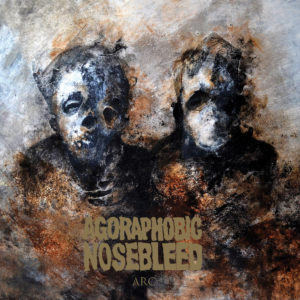
Agoraphobic Nosebleed – Arc (2016)
As ridiculous as their band name, Agoraphobic Nosebleed’s 2016 effort is a lazy mixture of stoner rock and deathcore. It consists of interleaved Black Sabbath-core grooves and pointless breakdowns accentuated by a menstruating screamo vocalist. By the very definition of those two genres, the reader should know this is but a string of feel-good moments with absolutely no point whatsoever.
One has to wonder if the band even knows what “agoraphobic” means, given their blatantly idiotic use in their band name. From there, we can easily tell how they would also try to use “fancy vocabs” from the metal terrain without even knowing what they are for, hence the constant groove with no beginning or ending. The meaningless breakdowns that do not necessarily make the stoner rock more bearable, but just emphasize what white trash trailer park music this is. It is an updated distorted-guitar redneck music.

Baroness – Purple (2015)
The most generic heavy metal rhythm guitar riffing possible clipped with too much compression and mixed with queer hipster rock for those who question their sexuality. I’m pretty sure the hairy girls in this band are in a polygamous relationship with the dude singing and blow roadies on the side. Kind of like how Carrie Fischer let the crew members of the original Star Wars rip the tape off her tits only with more Hepatitis C positive semen from people who tried intravenous drugs. This album sounds like my local modern rock radio station who plays Bush twice a day. Baroness is the most generic 2003 rock possible only maybe one of these girls’ brothers had Led Zeppelin and Metallica posters in her bedroom. Baroness should go back to VH1. Wait VH1 doesn’t air this crap anymore as even VH1 realized how terrible it is. VH1 is Rock of Love now.

Wolvserpent – Aporia:Kāla:Ananta (2016)
Who knows why we ever receive these sort of promos that are not remotely metal, though perhaps some suppose there is a connection because the sound and procedure may remind one of the pointlessness of post metal/rock. At the center of Wolvserpent’s music is a violin playing repetitive music while the fringes are filled with synthesizers, bass and some kind of distorted noise to fill the space. I imagine this purports to be ambient, and it evidently takes cues not only from what we know today as classic ambient but from the old, more noise-inclusive and experimental one. At some point during the 40 minutes of this release, towards the approach of its middle section, a growl-screech appears and we become the audience of a post-doom-black nothingness that lasts for about 5 minutes. After this, the music tries to pick up by adding some synths to beef up the emptiness of the lame doom metal writing that approximates what Esoteric do most of the time (waste your time with largely content-less sections while pretending to have an ambient edge). This amounts to little more than piled up noise with some consonance. This melting away proceeds for about 8 more minutes, after which we are introduced to a 4-minute hum. This hum gives then serves as background for some 3 classical string instruments playing repetitive disonant arpeggios for 3 or 4 more minutes until only they remain and the music fades out to the sound of soothing, rolling, waves. Empty and boring. Throw this away

Cult of Luna & Julie Christmas – Mariner (2016)
Enya songs with randomly inserted post-metalcore sludge bridges. Are those bongos? Is this Arise? Who thought of this? Whoever thought of this should be shot in the back of the head by their local troika, have their children post-nataly aborted, and their women deported to the camps for wives of traitors to the motherland.

Snake Tongue – Raptor’s Breath (2016)
Random stolen eighties metal riffs made into Entombedcore with gang vocals by Kurt Ballou. I think that’s a woman in the promo picture. Maybe it’s a man who is just confused that his baby dick is a big clitoris. Yeah they can get that big. Haven’t you seen Backdoor to Chyna?

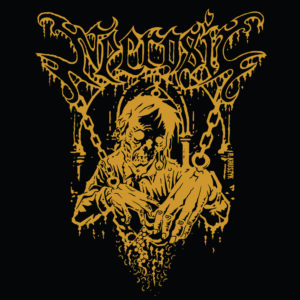
Necrosic – Putrid Decimation (2016)
These girls imagine what would have happened if in 1990 Autopsy had written songs entirely out of mosh riffs broken up by hardcore and shameless lifts from Slayer’s catalog. The answer is a metal band that would have only have been fit to play pizza parlors filled with 17 year olds too busy playing arcade games to pay attention. Anthrax if Anthrax decided to cash-in on sludge instead of nu-metal in the early 90s.
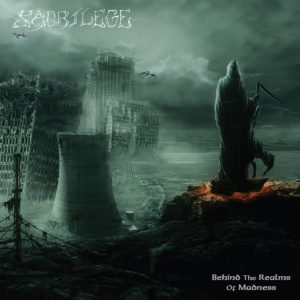
Sacrilege – Behind the Realms of Madness (1985)
This is the sort of release that exemplifies that some releases were never meant to be heard, not to mention be re-released. To pretend this is some sort of hidden gem is to pander to the clueless audience’s sense of nostalgia in the most dishonest way. Sacrilege never amounted to much as their music was never much. What we hear in hear in Behind the Realms of Madness is the sort of simpleton’s generic metal any angry teenager could be writing and playing in his garage with his friends after huffing glue. Each of these songs is based entirely upon a single riff played ad nauseam while an angry woman shouts about how much she hates her father. There are random supplementary riffs here and there but they are just meant to provide some sense of dynamism to the propulsion of the main riff. The main riffs in every song are generic and almost indistinguishable, the vocals are identical (some angry British woman screaming about how she got fucked over by her dad who wouldn’t pay for her BA in Womyn’s and Sexual Identity Studies), and every single song has the same kind of poser-trudging-accross-the-mall-food-court from Hot Topic vibe about it.

Sacred Few – Beyond the Walls (1985)
Another mediocre eighties heavy metal album with an annoying vocalist that deserved to be forgotten. Manilla Road this is not; the songwriting is generic, the riffs unoriginal, and the guitar tone too thin. This was only pressed to CD to cash in on idiot hipsters dumb enough to be deluded by Vice into believing that metal needs more dumpy women. I would rather listen to every Motorhead album I don’t remember even exists than this lame woman who drinks too much Budweiser again. This is retro-metal for cuckolded submissive males who think Steve Harris is Pogrom and jerked off to the blonde women in catsuits from The Oath instead of real porn. I’m going to crack open another Coors Banquet and use this CD as a coaster. Wait is the Puerto Rican guy in the collar her slave?


Lizzies – Good Luck (2016)
Judas Priest covered by Spanish pre-op transsexuals. Listening to this album makes me want to chop my leg off so my femoral artery will bleed out in three minutes. Two tracks in and I just put on Unleashed in the East instead. Let’s all listen to that classic instead of this crap:
Tags: Agoraphobic Nosebleed, Baroness, crust, Crust Punk, crustcore, crustfundies, Cult of Luna, deathcore, doom, Doom Metal, entombedcore, hipster bullshit, idiots, Julie Christmas, Kurt Ballou, Lizzies, metalcore, metalgate, necrosic, nuclear war now! productions, nwn, post-hardcore, reissues, relapse, relapse records, Rise Above Records, Sacred Few, sacrilege, sadistic metal reviews, scantily-clad women, shadow kingdom records, sludge, Snake Tongue, Speed Metal, The Oath, Wolvserpent, women in metal
This review was contributed to Death Metal Underground by Neil Sigmundsson.
The best albums are greater than the sum of their parts and provide the capability for listener immersion due to their length and integration but the song is still generally the most important and most fundamental compositional unit in death metal. Paying too much attention to atmosphere, musicianship, individual riffs, or other aesthetical and shallow (though important) qualities of an album can lead to overlooking compositional shortcomings, especially after the mind starts to fatigue or when listening to dense material. This is the case with Doomed Passages, which feels convincing – and in some aspects it is – but suffers from a number of flaws that might be missed during casual listening. That being said, even though the music of Question is imperfect, it is modest and sincere and at its best moments overflows with contagious vigor and energy that leaps fearlessly towards the abyss, a mark of the upper echelons of death metal artists.
First, praise is due to some of the mechanical and aesthetical elements of this album. The roaring, expressive vocals, replete with various single-syllable exclamations and grunts, are highly enjoyable and benefit from a cavernous quality due to studio-induced reverb. The drums are commendable in their creativity and in demonstrating a subtle understanding of the level of activity that best complements any given situation. Rumbling double bass creates a “rolling” sensation of high momentum at certain tempi. The production is deep and clear, and has a bit of cushion, but more separation between the instruments might have been beneficial.
There are two truly excellent songs on Doomed Passages: the second and fifth tracks. “Nefarious Conclusion” is the most structurally rigorous composition on the album, being basically linear but still having a clear exposition, rising action, climax, and falling action. This results in a rewarding experience. 0:00-0:50 is an example of creating variation, exploration, and motion out of a single phrase. The drum build-up to the invigorating climactic riff is genius; it sounds like transitioning from walking to running. The transitions at 1:15 and 4:34 are somewhat rough, but not enough to harm the composition. “Universal Path of Disgrace” has one of the most memorable riffs on the album, a sprawling eight bar tremolo-picked cycle. After the second occurrence of this riff and its accomplice, the song heads logically into a strange middle section that sounds like being in an unstable, slightly psychedelic limbo. A climax and resolution emerge from there. This song offers an interesting journey but it is slightly less satisfying than “Nefarious Conclusion.”
Aside from these two tracks, the remainder of the material on Doomed Passages shows promise and has shining moments but suffers from various problems. Some of these issues are abrupt transitions (“Mournful Stench” at 3:35), weak conclusions (“Devoured from Within”), and segments that overstay their welcome (the introduction of “…Bitter Gleam of Inexistence”). However, the major recurring problem and the biggest downfall of Question, though it is not immediately apparent due to the large number of riffs (many of which sound similar), is the purposeless, wandering song structures. In their template, Question take a single riff or a small group of riffs that act as an “anchor,” and they dance a bunch of ideas around that anchor before departing in an uncertain, random direction. This resembles a very relaxed version of what Slayer pioneered on tracks like “At Dawn They Sleep,” which completes two verse-chorus cycles and then departs radically from pop structure. The difference – and it’s a significant difference – is that Slayer maintained a strong narrative and a sense of purpose and tension throughout the entirety of their songs, whereas Question is usually content with wandering aimlessly. That Question can string a huge number of riffs together without the result sounding like patchwork is impressive (see “Grey Sorrow”), but cohesion alone does not make death metal of lasting quality, and as a result an appreciable amount of this material feels pointless and is frustrating to endure.
As hinted at above, there are simply too many riffs on Doomed Passages, a large proportion of which are interchangeable and forgettable, appear only once, and serve no vital function. Question demonstrate that they know how to overcome this problem in multiple ways (developing phrases, relating riffs through common or similar phrases, writing highly memorable riffs, returning to previous ideas in different contexts, etc.), but they need to apply these habits more diligently. There are focused passages, and there are highly memorable riffs, but ideally all of the passages should be focused and all of the riffs memorable and necessary. Thus, whereas many death metal bands have simplified their song structures to the detriment of the music, Question can actually benefit from being somewhat more repetitive in order to remove the forgettable and less evocative riffs and develop only their best and darkest ideas. This can be done while retaining the narrative, exploratory song structures. It will occurs more naturally and easily when the music is written and played with specific purpose and direction. More dynamics might also help in stressing important sections, as the sound sometimes blends into a monotonous stream. The digital, compressed production is of no help.
Another lesser issue with Doomed Passages is that consonance sometimes feels out of place when it appears in the midst of the generally dissonant and chromatic music. The interlude “Through the Vacuous River” is the most blatant offender, though the riff at 5:28 of “Universal Path of Disgrace” is questionable as well. While consonance is not vital for this music to express something meaningful, there is potential in its skillful application, as demonstrated by 3:00-3:35 of “Mournful Stench,” a section that arises at an appropriate time but is unfortunately not fully developed. The acoustic final track also works fairly well in context. If Question would hone their skills at incorporating consonance into their musical language, the wider range of expression will provide them with more tools for communication.
The standout songs on this album prove that Question is capable of writing intense and adventurous narrative death metal of the highest caliber. All of the tracks have redeemable and enjoyable qualities and marks of skilled craftsmanship, but most are hampered by the flaws discussed above. To further improve their already above average music, Question need to at least scrap the forgettable riffs and instead develop more extensively their best ideas while taking the reins and writing more directed and focused compositions. The second change can be realized either by forcing the songs to move toward clear climaxes and satisfying conclusions or by finding some wisdom and inspiration that can be represented in and communicated through the music. These young musicians are certainly technically proficient but need to write more coherent compositions if they want to inspirit their music instead of joining the ranks of so many other failed techdeath endeavors.
Readers may listen to Doomed Passages on Chaos Record’s Bandcamp page.
10 CommentsTags: 2014, Chaos Records, mexico, modern metal, musical analysis, question, review, tech-deth, techdeaf, techdeath, Technical Death Metal, tek-deth
Article by Corey M.
Overall satisfying (but not quite inspiring) straightforward songs with equal parts thrash and proto-death metal present. I don’t quite hear the “occult” sound these guys are evidently going for; their music sounds too immediate and, weirdly, fun. The band members clearly enjoy creating this music and therefore their work is free of pretense; no revivalist coat-tail riding here. Expect to hear fairly similar-sounding riffs throughout, without much in the way of dynamics. Compared to their contemporaries in bands like Nifelheim and Aura Noir, Occult Burial are competent and maybe even a step ahead of the more popular bands that mix thrash with modern metal because they aren’t impeded by gimmickry. Their lack of theatrics may work against them because they will probably continue to be overlooked until they learn to cut loose and let their imaginations run a little more wild with their songs. Compared to the more aggressive speed metal classics from Coroner and Razor, parts of Hideous Obscure are downright boring. Even playing a bit faster and cleaning up the recording could do wonders for the effectiveness of these songs. Some parts sound truly terrible. For instance, the snare drum sounds in the words of my favorite robot puppet “like a bag of sardines thrown up against the side of a pole barn.” Nevertheless there is promise here and I would reserve more judgment until Occult Burial release a proper-sounding album or I can catch them live.
22 CommentsTags: 2016, beer metal, Black Metal, death metal, funderground, Invictus Productions, modern metal, Occult Burial, party metal, proto-death, Proto-Death Metal, review, Speed Metal